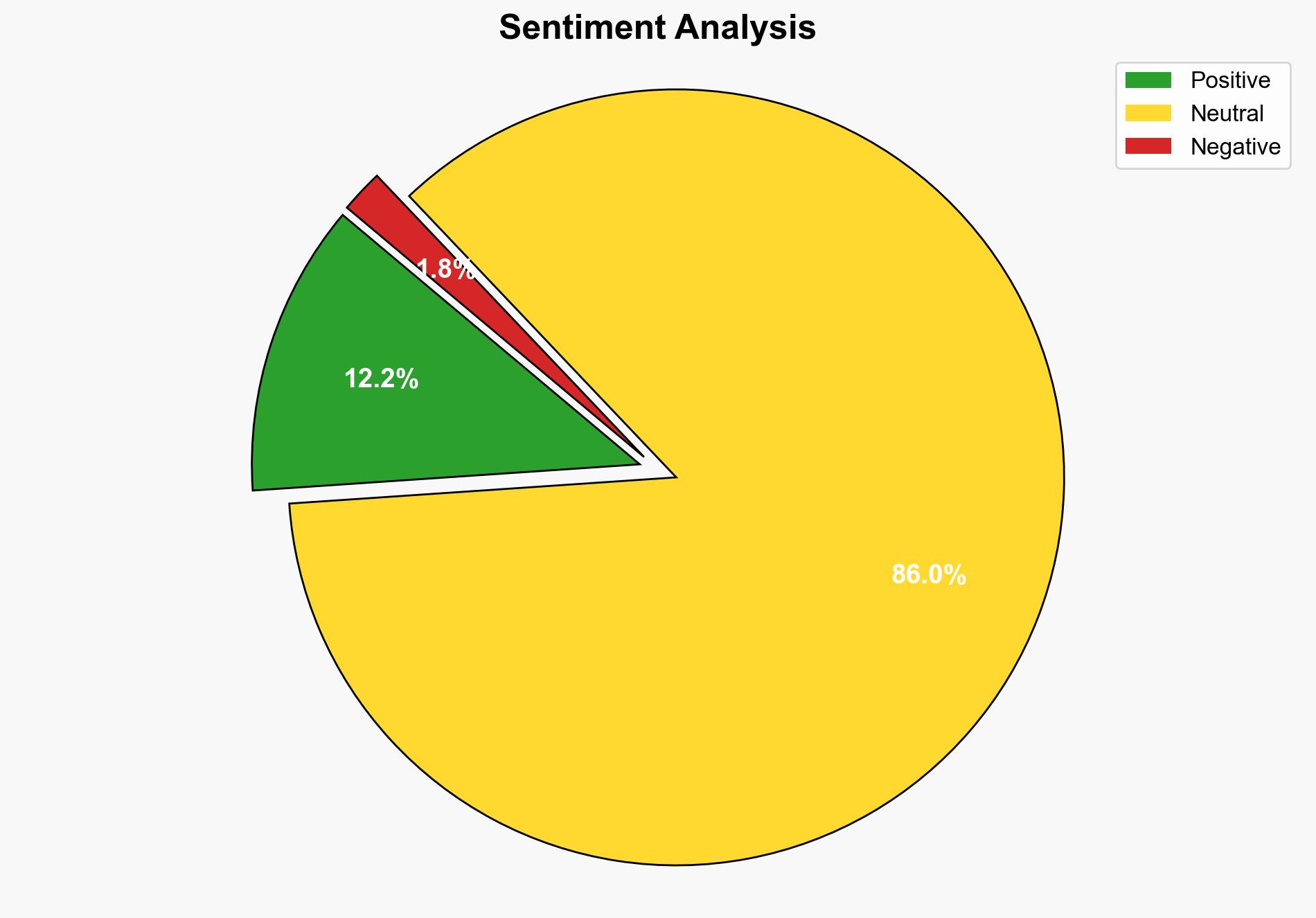Can China Meet Its Massive Climate-Finance Needs – Project Syndicate
Published on: 2025-10-30
Intelligence Report: Can China Meet Its Massive Climate-Finance Needs – Project Syndicate
1. BLUF (Bottom Line Up Front)
China’s ability to meet its climate-finance needs is uncertain, with significant challenges in decarbonizing high-emission sectors such as steel, cement, and road transport. The most supported hypothesis suggests that while China has the financial capacity, technological and infrastructural hurdles may impede progress. Confidence level: Moderate. Recommended action: Encourage international collaboration and investment in technology to support China’s decarbonization efforts.
2. Competing Hypotheses
1. **Hypothesis A**: China will successfully meet its climate-finance needs through its high savings rate and GDP investment, enabling it to decarbonize key sectors.
2. **Hypothesis B**: Despite financial capacity, China will struggle to meet its climate-finance needs due to technological limitations and the scale of required infrastructure changes.
Using ACH 2.0, Hypothesis B is better supported due to the complexity and cost of technological solutions like carbon capture and storage, and the extensive infrastructure development needed for electric vehicles and renewable energy.
3. Key Assumptions and Red Flags
– **Assumptions**: Both hypotheses assume China’s economic growth will continue to provide necessary funds. Hypothesis A assumes technological advancements will be timely and cost-effective.
– **Red Flags**: Over-reliance on projected economic growth and technological breakthroughs. Potential underestimation of political and social resistance to rapid infrastructure changes.
– **Blind Spots**: Lack of detailed analysis on the impact of global economic fluctuations on China’s financial capacity.
4. Implications and Strategic Risks
Failure to meet climate-finance needs could lead to increased global emissions, undermining international climate goals. Economic risks include potential financial strain from over-investment in unproven technologies. Geopolitically, China’s climate strategy may influence its global standing and relations with other major economies.
5. Recommendations and Outlook
- Encourage international partnerships to share technological innovations and reduce costs.
- Promote policies that incentivize private investment in green technologies.
- Scenario Projections:
- Best: Successful international collaboration accelerates technological advancements, enabling China to meet its goals.
- Worst: Economic downturn limits China’s financial capacity, stalling progress.
- Most Likely: Gradual progress with intermittent setbacks due to technological and infrastructural challenges.
6. Key Individuals and Entities
– Xi Jinping (China’s leadership)
– Major Chinese corporations in steel, cement, and renewable energy sectors
– International climate finance organizations
7. Thematic Tags
climate finance, decarbonization, renewable energy, international collaboration, economic strategy




